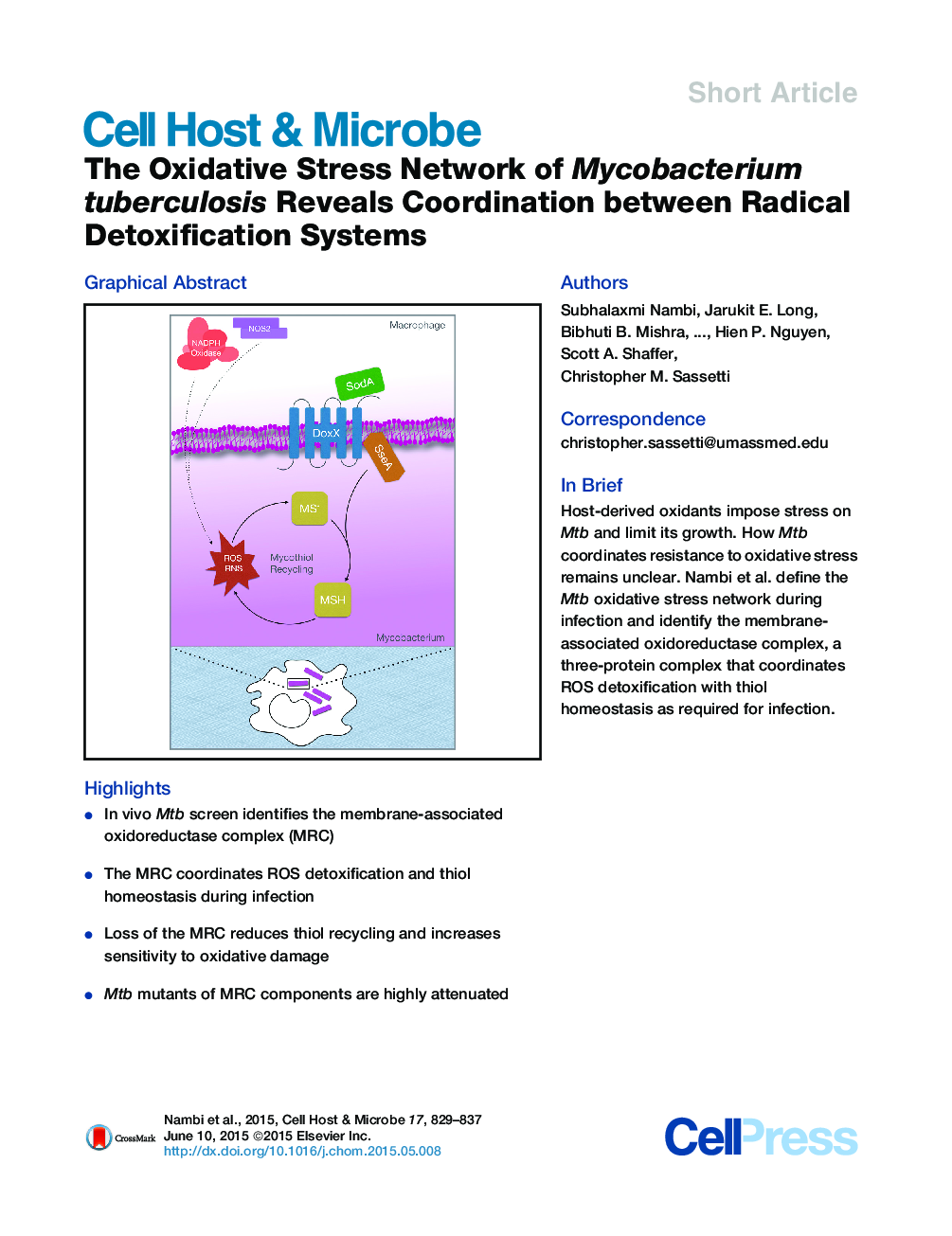| Article ID | Journal | Published Year | Pages | File Type |
|---|---|---|---|---|
| 4360957 | Cell Host & Microbe | 2015 | 9 Pages |
•In vivo Mtb screen identifies the membrane-associated oxidoreductase complex (MRC)•The MRC coordinates ROS detoxification and thiol homeostasis during infection•Loss of the MRC reduces thiol recycling and increases sensitivity to oxidative damage•Mtb mutants of MRC components are highly attenuated
SummaryM. tuberculosis (Mtb) survives a hostile environment within the host that is shaped in part by oxidative stress. The mechanisms used by Mtb to resist these stresses remain ill-defined because the complex combination of oxidants generated by host immunity is difficult to accurately recapitulate in vitro. We performed a genome-wide genetic interaction screen to comprehensively delineate oxidative stress resistance pathways necessary for Mtb to resist oxidation during infection. Our analysis predicted functional relationships between the superoxide-detoxifying enzyme (SodA), an integral membrane protein (DoxX), and a predicted thiol-oxidoreductase (SseA). Consistent with that, SodA, DoxX, and SseA form a membrane-associated oxidoreductase complex (MRC) that physically links radical detoxification with cytosolic thiol homeostasis. Loss of any MRC component correlated with defective recycling of mycothiol and accumulation of cellular oxidative damage. This previously uncharacterized coordination between oxygen radical detoxification and thiol homeostasis is required to overcome the oxidative environment Mtb encounters in the host.
Graphical AbstractFigure optionsDownload full-size imageDownload high-quality image (164 K)Download as PowerPoint slide
